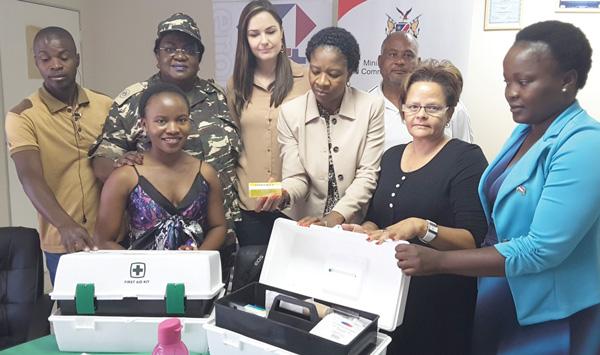
Desalination plant progress slow
Work on the much-anticipated Rössing desalination plant is yet to start as uranium producers scramble to find cheaper water for their mining operations. This was the indication given by Botha Ellis, Corporate Communications Advisor at Rio Tinto Limited. Responding to queries by the Economist, he said “We have not started any construction yet.
The project is still in a very early stage.” Rio Tinto announced plans for the construction of a desalination plant to be situated 6 kilometres north of Swakopmund at the existing Salt Works in July of this year. One of the prime reasons is the price paid for water from the Areva desalination plant, Rössing Uranium said in a statement released on its behalf by consulting firms, SLR Consulting and Aurecon. Various claims have surfaced that the water sourced through Areva’s plant is very expensive, tying in with the rationale behind the construction of another desalination plant.A report released by Aurecon and SLR this week highlighted the potential for cost savings of approximating US$6 million per annum or US$72 million throughout the planned ten years Rössing intends on using the desalination plant. The current average for fresh water produced at the Areva plant is US$4 per cubic metre. The Rössing Uranium desalination plant will drive down costs by as much as 50%, which is seen as a necessity for the continued viability of operating the Rössing mine at a profit in an environment described as “challenging.”Work done by its consulting engineers Aurecon shows a potential for the plant to produce 10,000 cubic metres of potable water in every 24 hour cycle. Annually, appwroximately 3 million cubic metres of water will be produced, consistent with Rössing Uranium’s own water demand. At full production, the plant will abstract 25,000 cubic metres of water per day, 10,000 of which will be suitable for consumption and 15,000 which will be discharged back into the ocean as brine.Another gripe behind the building of the plant by Rössing Uranium is state-owned enterprise Namwater’s failure to have constructed a desalination plant for mining purposes by October 2014.
Mining companies have pinned their hopes on Namwater constructing a desalination plant, widely seen in the industry as the only viable alternative. Additionally, a new 11 kilovolt power line of approximately 6 kilometres will need to be constructed together with a new substation at the plant. A water supply line of roughly 850 metres will connect the plant to the existing NamWater pipeline, transporting desalinated water.
The environmental impact assessment process is anticipated to be completed by January 2015.









































